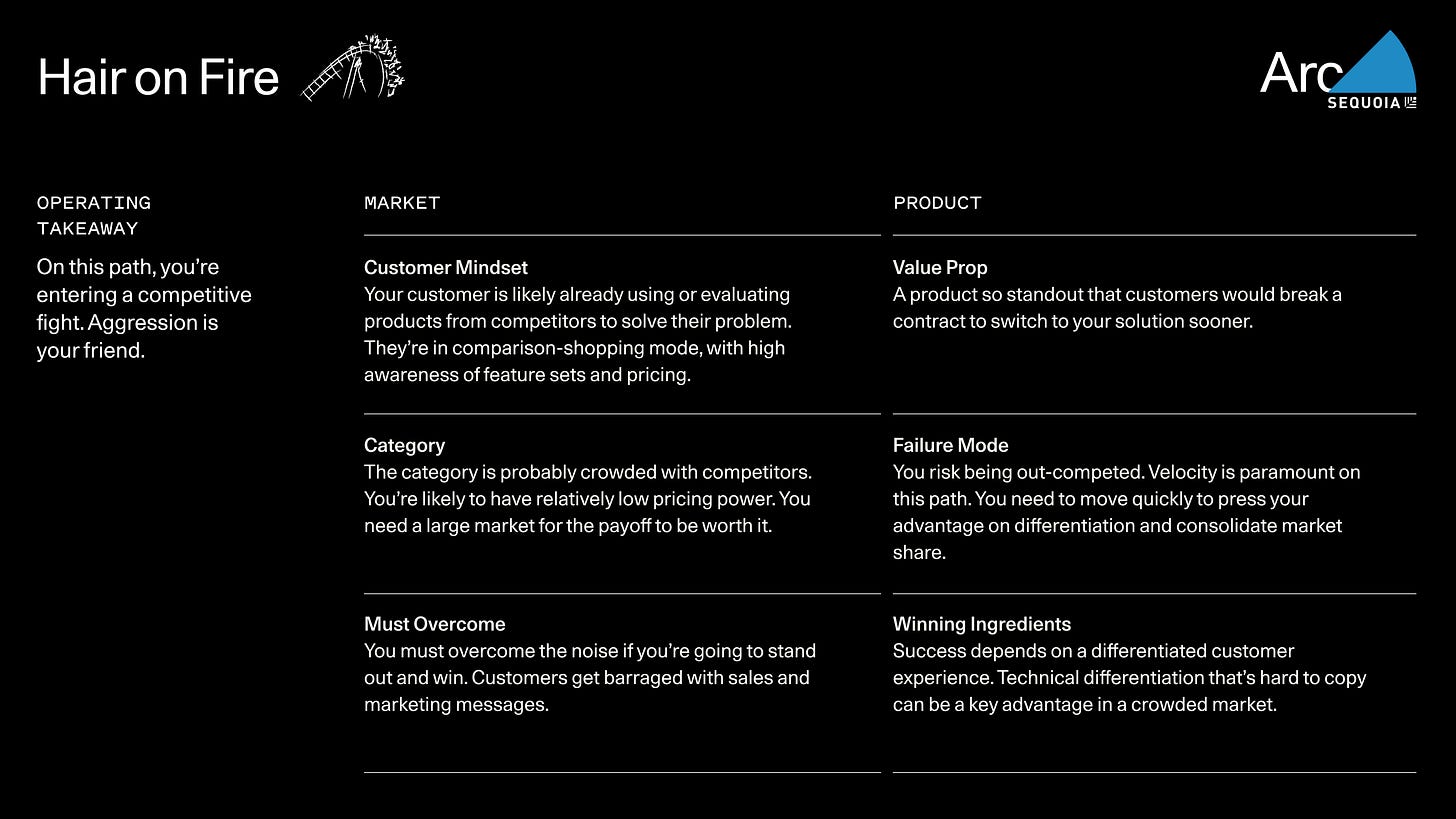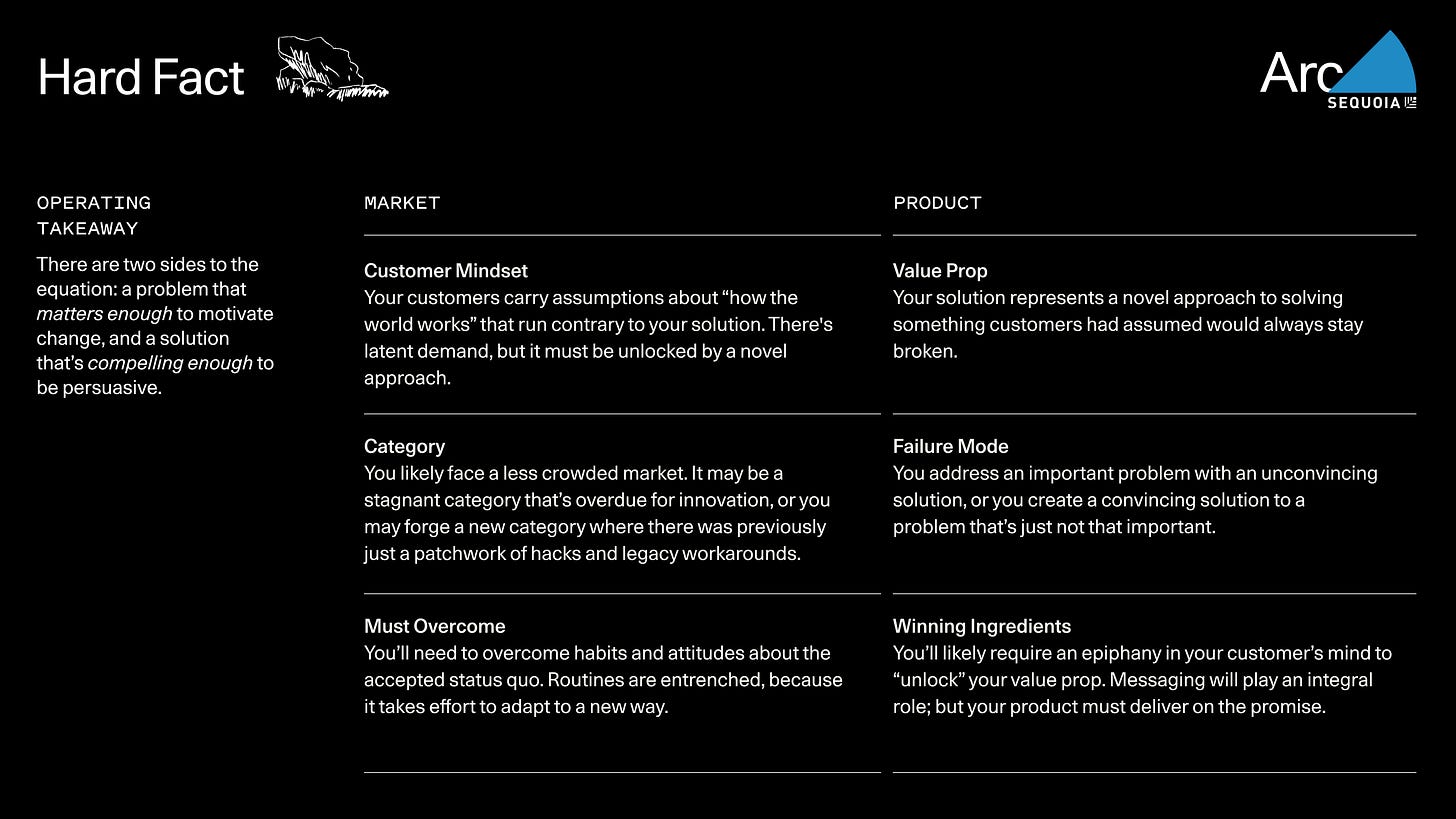Sequoia's Arc Product Market Fit Framework
Unlike the other Product Market Fit Models in the market, Sequoia’s Model doesn’t tell whether you have a Product Market Fit but tells where your product is positioned. It defines three types of Product Market Fits which focuses on how the customer relates to the problem you are trying to solve. According to the model, there are three different archetypes for a customer problem -
Hair on Fire: It’s a big, visible, urgent problem for the customer. Because it is a major problem, the category is crowded with competitors and the customer is actively comparing solutions. How do you succeed? By offering best-in-class products which are different, not cheaper or faster in delivery. You need to deliver a great product quickly and maintain it to succeed.
Main Themes: Differentiation. Product Velocity, Ability to Aggressively Outmaneuver the Competition
Hard Fact: It’s a universal pain point which the customer is resigned to live with. There is no urgency to resolve the issue and the customer can stay such forever. How do you succeed? By giving a solution novel enough that the customer is forced to come out of his inertia. Customer education and creation of opportunity is the key. The solution can either create a new market or alter the existing market considerably.
Examples: Uber(own cars vs taxis vs driving strangers around), Square(cash payment vs mobile payments)
Future Vision: It’s something new you are bringing into the market - something which no one envisioned. It’s not a problem and no one even thought about it. How do you succeed? By making the proposal and it’s ecosystem irresistible. This path of a high chance of failure but huge returns if successful. The failure is either it’s too early or it’s a wrong predictor of future.
Summarizing, one needs to answer the below questions
How do customers relate to the problem you are solving?
Do you feel the path you decided is identical to what the customer perceives?
What are your operating priorities? What should you optimize?
On the other hand, it is important to note that as time progresses, you may slide from one category to the another because of changing market dynamics.
References:





